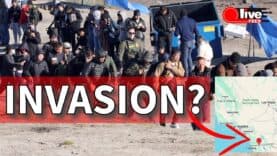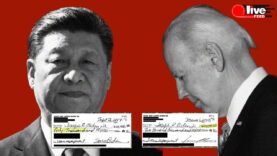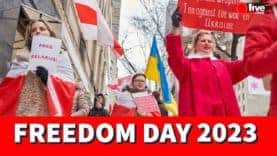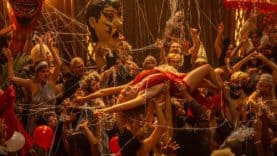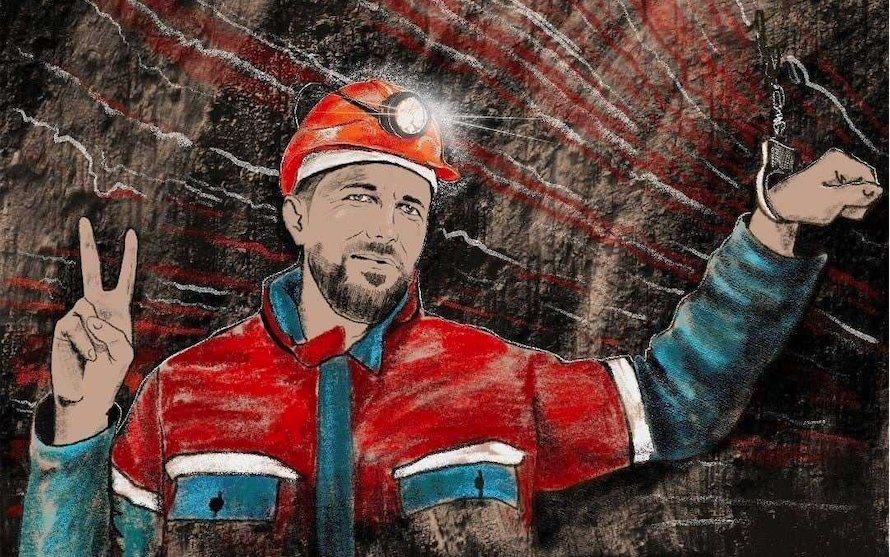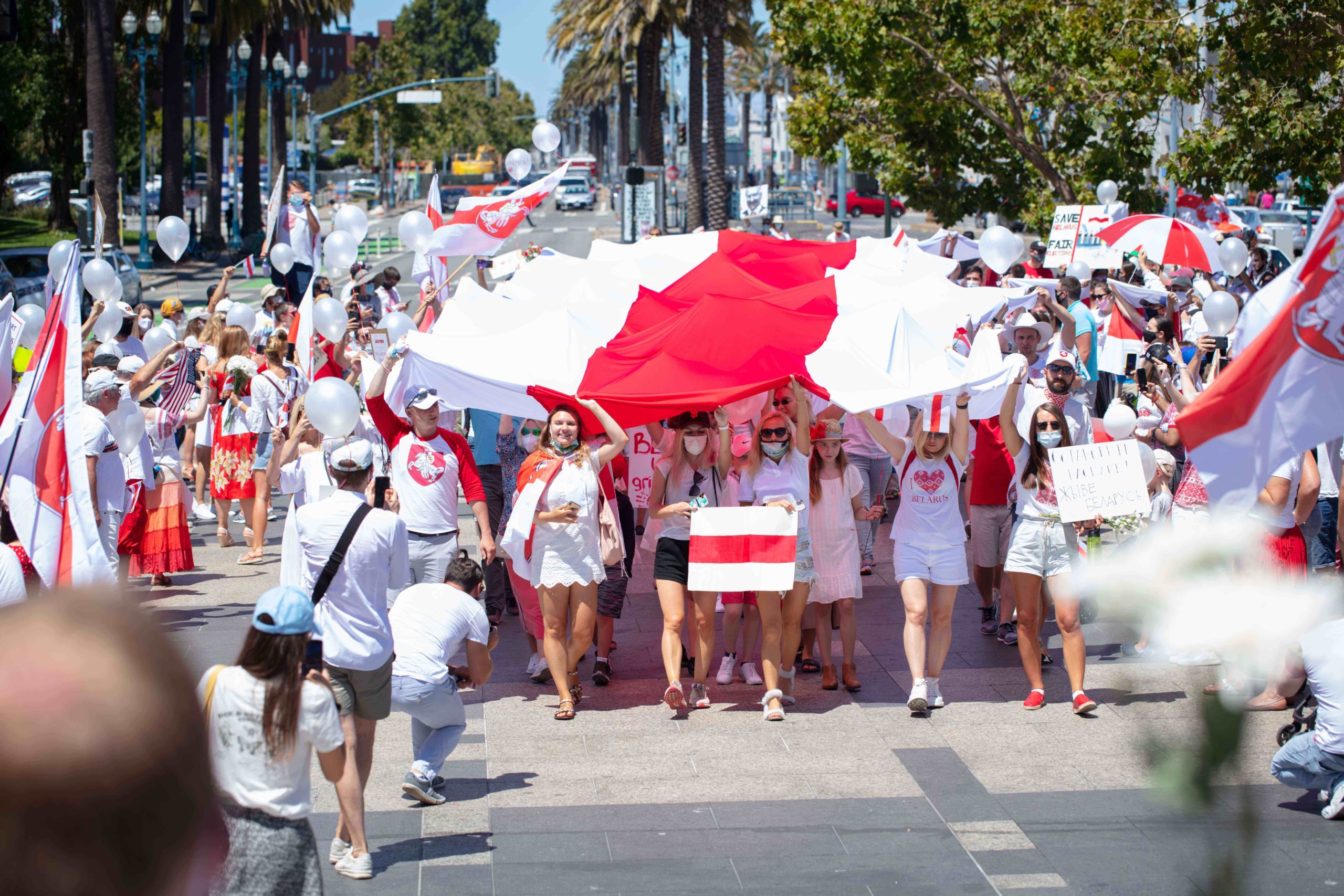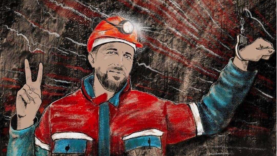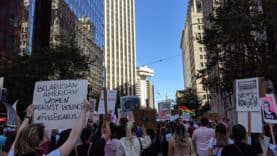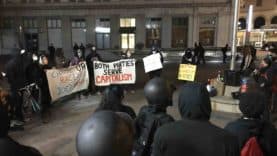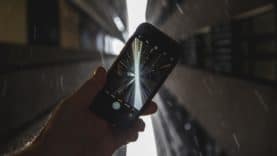Belarus protests: a look inside the strike
A miner at Belaruskali, Yuri Korzun was never particularly interested in politics.

Photo courtesy of Korzun family
“I have a family to take care of, so I always worked a lot and just didn’t have time for it.”
It all changed this year when the coronavirus pandemic hit.
“This year, Lukashenko put every Belarusian at risk, ignoring coronavirus,” Yuri shared.
Korzun’s co-worker died of COVID-19, he had bilateral pneumonia.
According to the United Nations Statistics Division (UNSD) data on monthly deaths in Belarus, in the period of April-June 2020, the total number of deaths exceeded the average figure for the last five years by about 5,500. Alexander Mrochek, cardiologist and academician of the Belarusian Academy of Sciences, suggested that COVID-19 deaths in Belarus were presented as deaths from cardiovascular diseases in the official mortality statistics. Vladimir Karanik, the former minister of health, was personally responsible for the falsification, Mrochek stated. COVID-19 was never officially addressed in Belarus, and no quarantine measures have been put in place nationwide. Mr. Lukashenko himself publicly denounced the pandemic, calling it a “psychosis.”
“I was very worried about my kid. I was also very worried about my mom, who’s been very sick. At that point, I understood he’s not my president.”
A nation of a stolen choice
One of the alternative candidates, Viktar Babaryka, also had COVID-19 on his election campaign agenda. Unlike the official government opinion, he emphasized that the pandemic was more than real and that the government should have done way more to protect the people.

Photo courtesy of Yuri Korzun
Korzun joined his initiative group and started gathering signatures for Babaryka. In Belarus, a country of roughly 9 million people, any presidential candidate nominee has to gather at least 100,000 signatures to officially become a presidential candidate. Babaryka has managed to gather over 450,000, which was a record number for an alternative candidate in the modern history of Belarus.
However, the Central Election Committee did not register him as a presidential candidate. Moreover, right before the deadline to submit the signatures, he along with his son were arrested under questionable charges. They remain in jail up until today and are recognized as prisoners of conscience by Amnesty International.
The last remaining hope for the struggling nation was Sviatlana Tsikhanouskaya, a spouse of the Belarusian businessman and YouTube blogger Siarhei Tsikhanouski, who was arrested and jailed back in May.
“You already know what happened next. The election results were rigged, it was proved. The number of votes did not correspond to the number of people who voted at the polling stations, and there were lots of videos showing the violations. When people took to the streets for a peaceful protest, the police employed disproportionate force against them: guns, rubber bullets, stun grenades.”
As a result of police violence, six people died, with dozens still missing.
“Some were beaten to death, and afterwards were found in the forest, it was staged like a suicide,” Yuri noted.
By that point, Korzun himself contracted COVID-19 and was self-quarantined at home.
“I saw all of it, and I was just crying. Crying every day,” he says.
On August 9-11, Belarus experienced an internet blackout that experts say was caused by the government. When the internet was turned on again, Yuri knew he had to do something to stop the violence and torture.
“I will not work for these bullets, for the salaries of the police and security forces. I will not do that. That’s what I decided for myself on August 13th, after I saw what happened.”
The strike
On August 17-18, 6,300 people came out to a peaceful protest at Belaruskali, to stop police violence, torture and killings of peaceful protesters. According to Korzun, the total number of people who currently work at Belaruskali is about 17,000. Despite the fear of repressions, over a third of them signed the strike papers.
“Each of these 6,300 people personally signed the strike papers, and those were the miners, the elite,” Korzun mentioned.
At that time, similar things happened at other major factories, including Grodno Azot, Minsk Tractor Works, BelAZ.
“When all these people came out, they were able to stop this lawlessness. Only then the government stopped torturing and killing people… They started letting people out of the Okrestina Detention Center. It was scary to see the condition of those who went through torture there.”
September 1, the UN has released an official statement demanding the Belarusian government “to stop torturing protesters and prevent enforced disappearances.” The UN human rights experts confirmed over 450 documented cases of torture during arrest and detention, including violence and sexual abuse against women and children.
The repressions
“Shortly afterwards, unprecedented threats from the factory executives started. They said the strike was illegal, and that the striking workers will be personally responsible for all the losses the factory has, and for Belaruskali it might be millions of dollars per day,” Korzun shared.
“Belaruskali director, Ivan Golovaty, started firing the striking workers, demanding explanations, depriving them of premiums, often for a full year. I don’t understand how it’s possible to be such a cynical person to impose sanctions on people who came out to stop violence, torture and killings.”

3 meters (118″) long.
Photo by Vera Sauchanka, LiveFEED
Under the mounting pressure, Yuri knew he had to do something that would be heard by everyone, and so he came up with a plan to stay in the mine, chaining himself handcuffed.
September 10 was his first day at work after the quarantine, and this was the day his protest started. He wrote a letter to Mr. Golovaty, demanding the factory executives to stop pressuring the workers who speak up against the rigged presidential election, the violence and torture on peaceful citizens, and complete lawlessness in the country. He also demanded Lukashenko to step down.
Watch our video interview with Yuri to find out what happened next.
“Non-resistance to evil by violence“
After the protest, Yuri received numerous proposals to help, from Belarusians all over the world. He didn’t accept any of them.

his protest started.
Photo courtesy of Yuri Korzun
“My protest was not intended to resolve any kinds of financial issues. I’m ready to eat buckwheat and potatoes, but this protest will go on.”
Korzun never publicly revealed the names of those who came down in the mine and stopped his protest with brutal force. He says that disclosing their names would be “unethical.”
“Right now we have a person [Alexander Lukashenko] who has an army working for him. They just grab people from the streets and drag them to unknown locations. So how do we deal with them? We have to keep going with a peaceful protest, hoping that Lukashenko would hear people and just sit down to talk.”
Korzun emphasizes that the protest has to remain solely peaceful.
“So everyone would stay alive, even those “on the other side,” he summarized.
The miracle

Photo courtesy of the Strike Committee.
Another Sunday passed. Despite the fear of police violence, blocked roads, the shutdown of public transportation, and after all, heavy rain, yet again over 100,000 Belarusians marched through the streets of Minsk and other cities, including Yuri’s hometown, Salihorsk. The national white-red-white flag was put on the tower of Belaruskali, and this is how factory workers met this Monday morning.
Of course, it was ordered to take the flag down, and most of those who bravely marched tens of miles through the streets in a peaceful protest against the regime had to return to work on Monday. But there’s something else that keeps happening every single day of the Belarusian protest: a very clear understanding that the nation will not go back to its past. Why? There’s one simple and straightforward reason: an overwhelming majority of Belarusians want to march ahead, into the future without Mr. Lukashenko.
In some way, Belarusians became a Biblical example of non-resistance to evil by violence. And I do believe the miracle will happen. Because this nation deserves it.
Do you have your own experience you’d like to share or any information you’d like to add? Sign up for a free account, and post directly to our LiveFEED!


